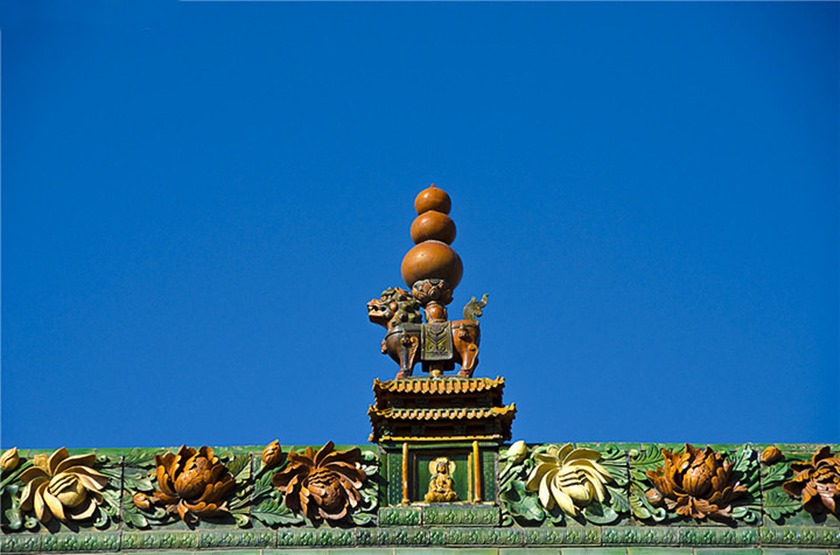Chinese Name: 双林寺 Pronunciation: shuāng lín sì
Recommended Time for Visit: 1-2 Hours
Best Visiting Season: Summer and Autumn (April to October)
Occupied Area: About 15.000 square meters
Building Time: Before 1011 AD
Address: Qiaotou Village, Pingyao County, Jinzhong City, Shanxi Province
|
Price
|
Description
|
| 35 Yuan | Adult younger than 60 and children taller than 1.2meters |
| Free | 60 years old (included) with Senior cards or ID card\Below 1.2 meters(not included) in height |
|
Shuanglin Temple
|
Peak Season
(April 1st to October 31 st) |
Low Season
(November 1st to March 31st) |
| Opening Hours | 8:00-18:00 | 8:00-17:30 |
| Ticket Office Opening Hours | 8:00-17:30 | 8:00-17:30 |
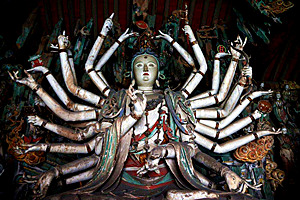
Shuanglin Temple is located in the Qiaotou Village, about six kilometers (four miles) southwest to Pingyao Ancient City. It is praised as the “ancient painted sculptures museum” for the 2000-odd exquisite sculptures which embody the excellent skills of the artisans in the Song, Yuan, Ming, and Qing Dynasties. Millions of tourists from home and abroad are attracted here to appreciate.
Shuanglin Temple consists of ten large halls, which are the Heavenly Kings' Hall, the Arhats' Hall, the Mahavira Hall (Da Xiong Bao Dian), and the One-Thousand Buddha Hall, the Sakyamuni Hall, the Bodhisattva Hall, the Ti-Tsang Bodhisattva Hall, the Guan Yu's Hall, and two other halls.
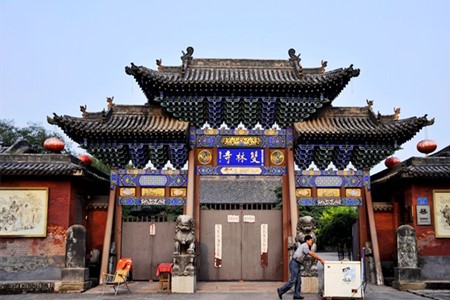
At the very beginning, Shuanglin Temple was named as Zhongdu Temple which was changed as Shuanglin in the Song Dynasty (960-1127). The name changing originated from a Buddhist story about Sakyamuni, the founder of Buddhism. By the Buddhist sutra, Sakyamuni entered nirvana under two trees which meant Shuanglin in Chinese. Hence, the temple got the name, Shuanglin Temple.
Shuanglin Temple boasts a long history of over 1400 years. In 1988, it was nominated as a Chinese 4A level tourist attraction. In 1997, Shuanglin Temple was registered in the World Heritage List by UNESCO as an important cultural site of Pingyao Ancient City.
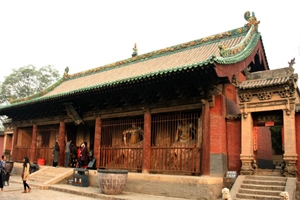
Seeing from the gate of the Heavenly Kings' Hall, the sculptures of four Heavenly Kings are below the eaves, which are magnificent and majestic. A plaque is written three characters 'Tian', 'Zhu', and 'Sheng' was hanging in the center below the eaves. There is also the sculpture of Maitreya which is worshiped by two Bodhisattvas serving on his left and right, four Heavenly Kings and eight Bodhisattvas. With a height of three meters (ten feet), each one of the Four Heavenly Kings holds a sword, a snake, an umbrella, or a Pipa (a Chinese musical instrument) in hand, indicating good harvests for folks. All sculptures here are lifesome and lively.
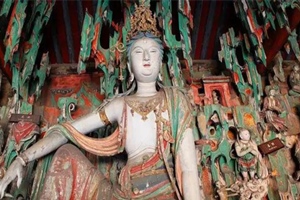
Standing on the east of Heavenly Kings' Hall, One-thousand Buddha Hall has more than 500 sculptures, accounting for a quarter of the total. In the center of the hall is the sculpture of Kwan-yin of freedom sitting on the pedestal with her right leg bent and left one stepping on a lotus leaf. The statues of Wei Tuo and Inuyasha stand on its right and left. Wei Tuo, a rare masterpiece of painting in the Ming Dynasty, twisted his upper body to the right and raised his left arm. He seemed to have discovered the evil monster who was making trouble and was about to raise his arms and screamed at him. His upper body movement broke the rigidity of his lower limbs, forming a continuous movement and inspiring the imagination of visitors.
Other hundreds of Bodhisattvas divided into five or six layers are hanging sculptures and wall sculptures. They either ride auspicious clouds or ride strange beasts. More than 30 statues on both sides of the windowsill and door are vivid, whose clothes and decorations are valuable materials to study the evolution of the Ming Dynasty costumes.
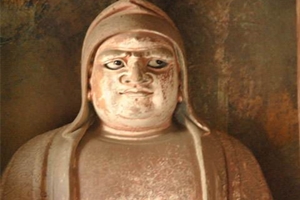
The sculpture of Kwan-yin stands in the middle of the Arhats' Hall with eighteen arhats on its right and left. These arhats are diversified in facial expressions and postures, one drunken, another sick. Some are fat while others are thin or dwarf. The most impressive is the mute arhat with frowned eyebrows and sealed lips. All the sculptures embody the ancient artisans' exquisite craft
There are other two must-sees, the Sakyamuni Hall and the Bodhisattva Hall. The sculpture of Sakyamuni in the Sakyamuni Hall is attended by Manjusri and Samantabhadra on his left and right. The most distinguished one is the sculpture of one-thousand Hand Kwan-yin in the Bodhisattva Hall with 26 arms actually, each hand holding different dharma-vessels, for example, flower, umbrella, etc. Although the one-thousand Hand Kwan-yin has many arms, each posture is different and looks very beautiful.
Take bus 108 from the Pingyao Ancient City to Shuanglin Temple. (1 yuan)
By Taxi
Chinese: 请带我去双林寺。English: Please take me to the Shuanglin Temple.
If you go to the Shuanglin Temple from the Pingyao Ancient City, it takes about 20 minutes (20 yuan).
